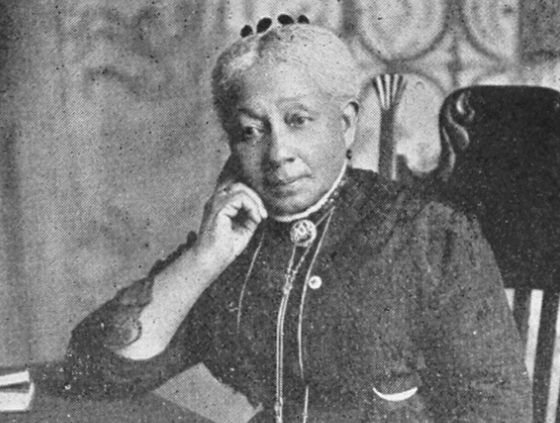 MARRIED TO MEDICINE: THE LEGACY of DR. SUSAN SMITH McKINNEY STEWARD
MARRIED TO MEDICINE: THE LEGACY of DR. SUSAN SMITH McKINNEY STEWARD
by Carl Hancock Rux
Harlem Renaissance writer and anthropologist, Zora Neale Hurston once famously wrote, “Research is formalized curiosity. It is poking and prying with a purpose. It is a seeking that he who wishes may know the cosmic secrets of the world and they that dwell therein.”
Perhaps no one knew that better than 74 year old William McKinney, a retired schoolteacher, who having spent 10 years of his life working tirelessly to gain some recognition for his grandmother to be honored as Brooklyn’s first black woman physician. Susan Maria Smith McKinney Steward (March 1847 – March 17, 1918) was an American physician and author. She was the third African-American woman to earn a medical degree, and the first in New York State.[1]
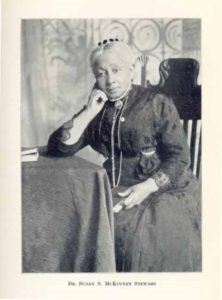 A MEDICAL PRACTICE GROWS IN BROOKLYN
A MEDICAL PRACTICE GROWS IN BROOKLYN
McKinney-Steward’s medical career focused on prenatal care and childhood disease. From 1870 to 1895, she ran her own practice in Brooklyn and co-founded the Brooklyn Women’s Homeopathic Hospital and Dispensary.[2] She sat on the board and practiced medicine at the Brooklyn Home for Aged Colored People. From 1906 she worked as college physician at the African Methodist Episcopal Church’s Wilberforce University in Ohio. In 1911 she attended the Universal Race Congress in New York, where she delivered a paper entitled “Colored American Women”. A retired schoolteacher and resident of St. Albans Queens, Mr. McKinney no doubt was aware that his grandmother served as a physician in Brooklyn for 26 years, starting in 1870. From 1964-1974, 74-year-old William McKinney’s research into Dr. McKinney’s career took him to the records of the Long Island Historical Society and the Medical Society of the County of Kings. He also found references to Dr. McKinney in Stiles’ History of Kings County, in the Medical and Surgical Register of the United States of 1890, and in Brooklyn directories from 1871 to 1896. He then began a campaign to honor his grandmother, sending letters to both the central office of the Board of Education and local school board.
Dr. McKinney was the daughter of Sylvanus Smith, a prominent Brooklyn pork merchant and abolitionist who engaged himself in spearheading Brooklyn’s anti–slavery movement which began in the neighborhoods we now call DUMBO and Vinegar Hill. At the end of the American Revolution, this was the town of Brooklyn. It was one of six agricultural towns in Kings County until it was incorporated as the city of Brooklyn in 1834. From 1810 onwards, this area was home to a self– determined free black community. The community built independent institutions to meet, study, pray, and combat the widespread racism around them. They established a powerful anti–slavery agenda for future generations of activists. In 1838 eleven years after New York finally abolished slavery. Sylvanus Smith and other African Americans, including Peter and Benjamin Croger, William Wilson, James Pennington, James and Elizabeth Gloucester, and William and Willis Hodges, lived in the communities of Williamsburg, Fort Greene, and Cobble Hill. They gave up their urban existence to create a small middle-class farming community which they called Weeksville (named after James Weeks, an African American settler from Virginia who was the earliest landowning resident in the area.) Farming was only part of the motivation for the Weeksville settlement. By purchasing land, the families ensured that they met the $250 property requirement for voting established by the 1821 New York State Legislature solely for black males in the state.
Weeksville is now part of Bedford-Stuyvesant, and the Weeksville farm of Sylvanus and Ann Springstead Smith was at the corner of what is now Fulton Street and Buffalo Avenue. Smith was also committed to African American educational achievement as a means to improve the community’s social status. He sat on the board of trustees for the African American Free School of Brooklyn, also known as Colored School No. 1. The school was founded on November 2, 1787, and subsequently opened in 1795. Its mission was to provide education to children of slaves and free people of color. Its leaders also advocated the full abolition of African slavery. Sylvanus Smith and his wife Ann Springstead Smith had seven children.
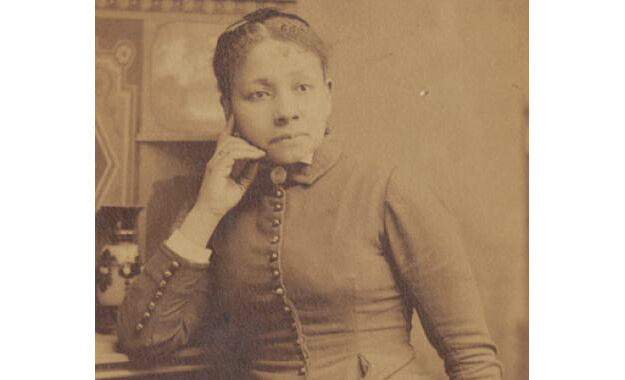
A FAMILY LEGACY
Two of their daughters, Susan Smith McKinney-Steward and Sarah Smith Thompson Garnet, later became prominent citizens in their own right. The Smiths instilled the value of education and social activism in both their daughters. Smith’s social status allowed his children access to a quality education. Susan and Sarah were both educated in the classics and music.
Susan Smith was born in 1847 in what was then known as Crow Hill, Brooklyn (today as Crown Heights), arguably named so because the area was once the site of a small outpost of shanties and piggeries known as Crow Hill.
It’s main landmark: the imposing Brooklyn Penitentiary, sometimes called the Crow Hill Penitentiary, which stood on Carroll Street between Nostrand and Rogers Avenues from 1846 until 1906. An 1877 Brooklyn Eagle article states, “The name Crow Hill was derived from the fact that in the trees which are scattered over this ridge, crows, who preyed on the neighboring farmers, found a retreat. ”Other sources say the penitentiary inmates were also referred to as crows. Then there’s a third explanation: most historians agree that the name Crow Hill was coined in derogatory reference to the black community of Carrville and Weeksville, whose residents were sometimes known as “crows.”
OFF TO COLLEGE
She was was the first African American woman to be admitted to the New York Medical College for Women in 1867, having paid for her tuition out of her own savings) and earned her M.D. in 1870, a student under Dr. Clemence Sophia Harned Lozier, (December 11, 1813 — April 26, 1888) an American physician who founded the New York Medical College and Hospital for Women; noted feminist and activist, and president of the New York City Suffrage League and the National Women’s Suffrage Association. It would have been no accident that Dr. McKinney Steward would become the third African-American woman to earn a medical degree, and the first in New York state under Dr. Lozier.
Dr. Lozier, taught hygiene and anatomy which she learned from her older physician brother. He also helped guide her interest in medicine into her late thirties. She was one of the first teachers in the city to introduce the study of Psychology, Hygiene and Anatomy as branches of the female education. [5At the time, these topics were not included in women’s education, and her classes quickly expanded. Among other topics, she educated women on the physiological consequences of fashion, like the deformities and breathing problems caused by corsets. She continued to teach these classes until 1843, and soon after, moved to New York and continued giving lectures and visiting the sick. Her first husband died in 1837, and she later remarried to John Baker in New York. After her husband’s death in 1837, Lozier continued with her medical training which she desired to devote herself…Lozier attended Plainfield Academy and learned about medicine from her mother and brother as well as from caring for her ill husband.[6] She wished to attend medical school, but women were not accepted at the time, so her brother continued to tutor her. [She continued to apply to medical schools and experienced a lot of rejection, even from Geneva Medical College, which was attended by Elizabeth Blackwell, the first woman in the U.S. to achieve a medical degree in 1849. Eventually, she was allowed to attend classes at Central New York College of Rochester in 1849, and was later admitted to Syracuse Eclectic College.[4] In 1850 the Central Medical College of New York moved to Rochester and became Rochester Eclectic Medical College. In 1849 the Eclectic Medical Institute merged with Randolph Eclectic Medical Institute and moved to Syracuse to become the Central Medical College of New York, which agreed to admit Lozier as a medical student.
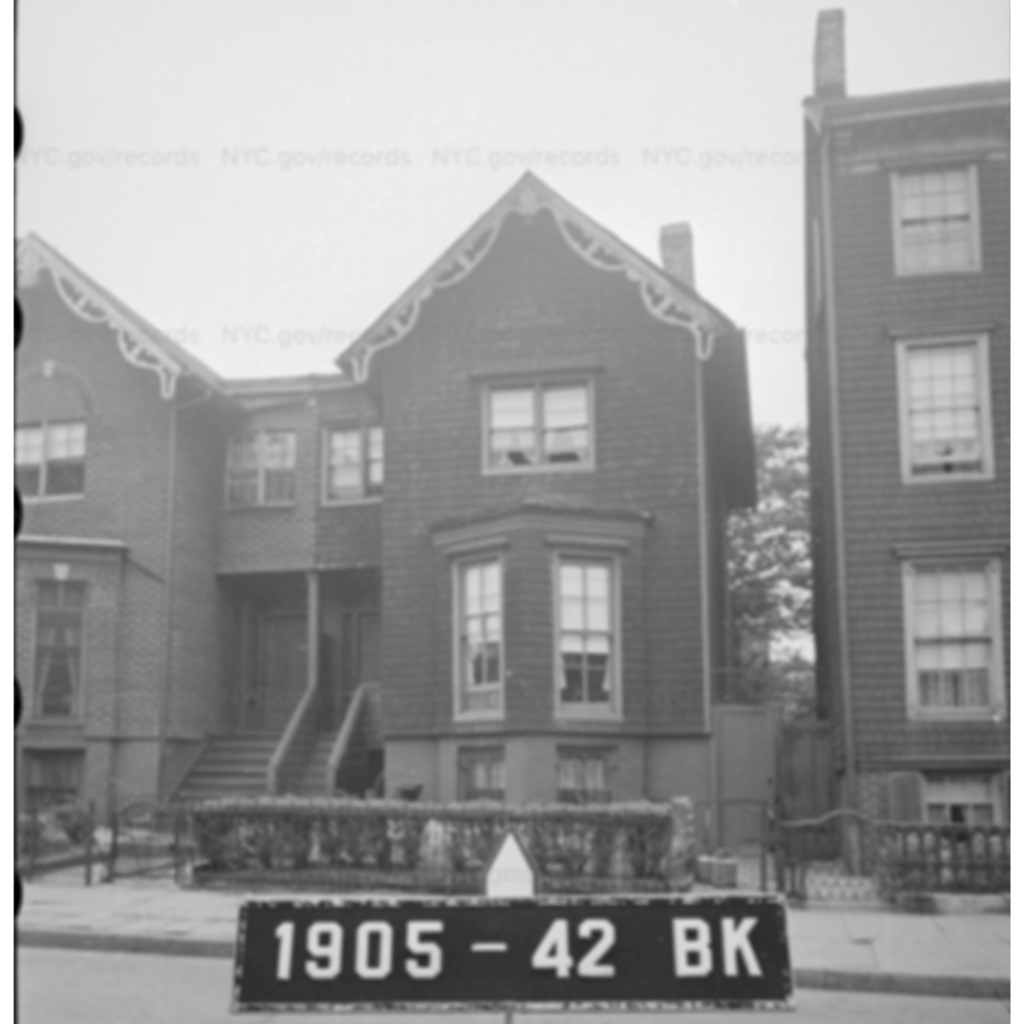
McKinney’s former home on Ryerson between Willoughby & Myrtle Aves, where Willoughby Walk Co-ops now stand.
A HOMEOPATHY APPROACH
The differences between orthodox medicine and homeopathy could hardly be more vivid. From its beginning homeopathy always began with a long consultation, lasting at least an hour, in which all aspects of the patient’s illness and life were discussed—homeopaths like to stress that they practice ‘holistic medicine’—and the appropriate treatment chosen. In contrast, during the first half of the nineteenth century, when homeopathy was becoming established, orthodox medicine was immersed in the belief that advances in understanding disease could only come from a detailed correlation of symptoms and signs of the sick patient on the ward, and the findings at autopsy: clinico-pathological correlation. As Bichat famously put it put it at the very end of the eighteenth century:‘ For twenty years from morning to night you have taken notes at patients’ bedsides… which, refusing to yield up their meaning, offer you a succession of incoherent phenomena. Open up a few corpses: you will dissipate at once the darkness that observation alone could not dispel.’8
Clinico-pathological correlation demanded the understanding of a very long and complex collection of diseases accompanied by heated debates between the contagionists and the anti-contagionists. This was way beyond the comprehension of the general public. Moreover, medical treatment was to a large extent crude and ineffective, consisting largely of potentially dangerous polypharmacy, purging, and profuse blood-letting.
Hahnemann showed no interest in detailed pathology, and none in conventional diagnosis and treatment. He was only interested in the principles of homeopathic medicine which he used to name the illness.2 Classical homeopathy was therefore seen by its supporters as an attractively safe system, simple, easy to understand, and centered on the patient as a whole and not on pathological lesions. This goes a long way to explain why homeopathy was popular.9
But there was one aspect of homeopathy which, from the time it was first announced in about 1814, led to open warfare between orthodox medicine and homeopathy. This was the result of Hahnemann’s belief that drugs should be given in a dose which only just produced the slightest symptoms of the disease which was being treated. Whereas Hahnemann claimed that homeopathy could cure all or virtually all diseases, his followers modified these claims in the hope of becoming accepted by orthodox medical practitioners. One of the first institutions devoted to homeopathy was the American Institute of Homeopathy, founded at the end of the nineteenth century, when it seems that ‘a rapprochement between homeopaths and conventional physicians gradually unfolded. Homeopaths adopted new orthodox treatments… while allopaths [regular orthodox physicians] borrowed homeopathic remedies… In 1903, after long antagonism, the American Medical Association… invited homeopaths to join [the Association].’9 The Food, Drug and Cosmetic Act of 1939 in the USA allowed homeopathic medicines to be sold openly on the market. Five homeopathic hospitals were founded in Britain, the two largest (in London and Glasgow) having in-patient units. Today the ten most common diseases treated by homeopaths are (in order of frequency) asthma, depression, otitis media, allergic rhinitis (hay fever), headache and migraine, neurotic disorders, non-specific allergy, dermatitis, arthritis and hypertension.
There seems little doubt there has been a remarkable revival of homeopathy since the 1960s and 1970s in many countries, but especially the USA where, in 2002, it was estimated that the number of patients using homeopathic remedies had risen by 500% in the previous seven years, mostly by purchasing over-the-counter remedies. In the USA patients seen by homeopaths tended to be more affluent, more frequently white, present more subjective symptoms, and to be younger than patients seen by conventional physicians.
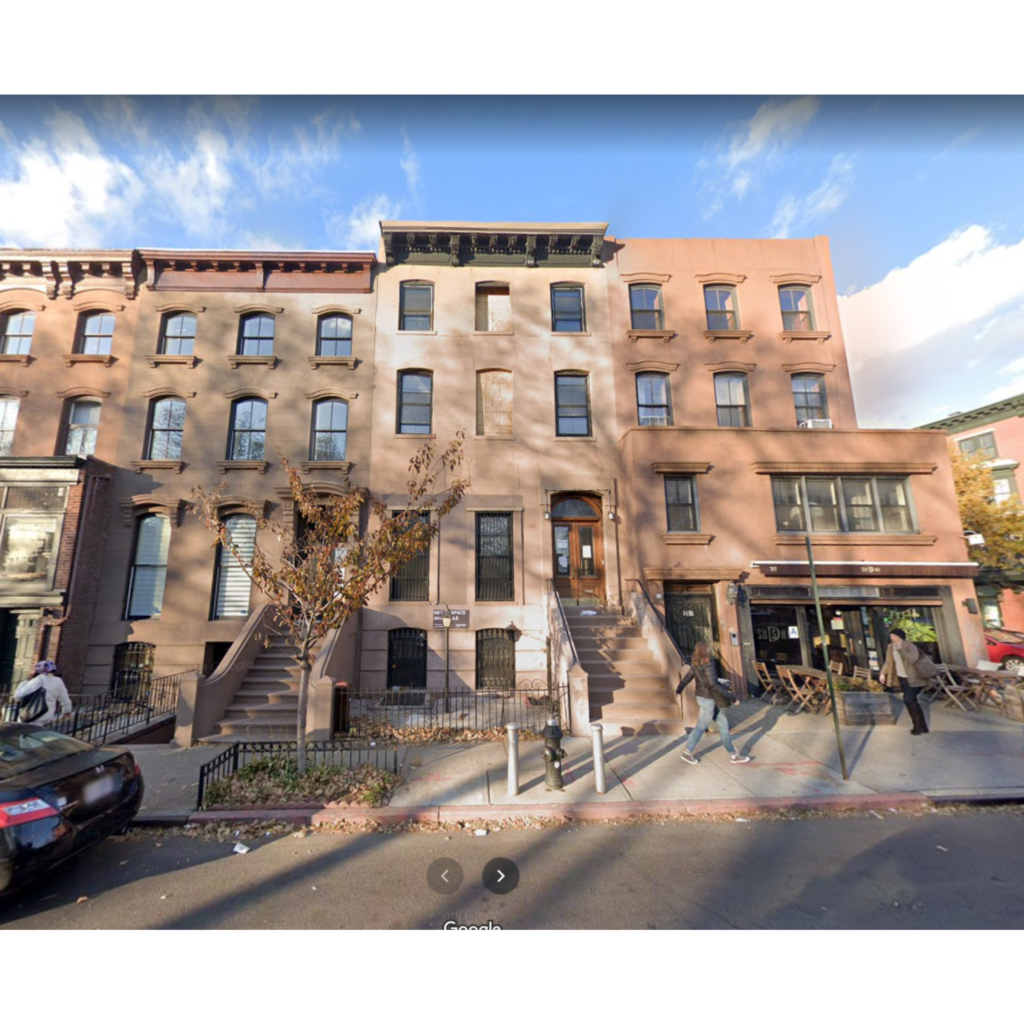
McKinney’s former home and medical office at 205 DeKalb in Fort Greene
BACK TO BROOKLYN
Graduating as valedictorian of her class, and after eight years of practice in a culture prejudiced against women physicians (and certainly African American women) was able to maintain two offices in both Brooklyn and Manhattan, both servicing Blacks and whites alike. As such, she joined a handful of black women physicians who emerged in the Reconstruction period and become the first African-American woman in New York State to earn a medical degree, and the third in the United States. Described in the Brooklyn Daily Eagle as a woman whose home (and practice) was at 178 Ryerson St., (a home “leaving nothing to be desired neither in comfort and tasteful surroundings”, shared with her husband, Rev. W. G. McKinney, “ a colored Episcopal clergyman with literary aspirations; their children and her widowed mother”) Dr. McKinney Steward was further described as “ a well to do woman” both “self-sustaining and consequently helpful to others”, as well as being “three fourths white… good-looking, possessing a strong face… whose attire was modest, and Individual, having a true appreciation of dress and its importance (thus rendering her) a lady in manner, quiet and self-contained, and evincing in her conversation the culture and refinement of the true woman. Brooklyn ought to be proud of having among its physicians the first colored woman graduate of any medical college in America. This is a distinction, for in this country there had been a prejudice against her race, not known in European countries. Were she in Edinburgh or London or Paris, she would have become famous with the same results that she has won here, step by step, and in one of the most closely contested efforts that social custom and ingrained prejudice—the result of slavery—could combine to prevent success. Yet, she has won it, and won it in a truly womanly and se sensible fashion, by sheer industry and unflagging will.”
She practiced as Dr. Susan Smith in Brooklyn from 1870 to 1873. One year later, she married Rev. William G. McKinney and practiced in Brooklyn as Dr. Susan Smith McKinney until 1896. In 1882, she was a member of the New York Medical College and Hospital for Women at 213 West 54th Street, between Broadway and Seventh Avenue in Manhattan. In 1881, she became one of the founders of the Women’s Hospital and Dispensary at Myrtle and Grand Avenues in Brooklyn and remained on the staff of this hospital until 1895. In 1887, Dr. McKinney took a postgraduate course at the Long Island Medical College and Hospital in Brooklyn, where she was the only woman student. She also served as official physician at the Brooklyn Home for Aged Colored People.
Active in community life, according to her grandson, Dr. McKinney also was organist and choir director at the Bridge Street A.M.E. Church for 28 years. Having been taught to play the organ by the Plymouth Church organist. Dr. McKinney first practiced medicine at 243 Pearl Street, later at her homes at 178 Ryerson Street, and later, 205 DeKalb Avenue. She was one of the founders of the Women’s Hospital and Dispensary at Myrtle and Grand Avenues and was a staff member there until 1895. She also was an official physician at the Brooklyn Home for Aged Colored People. In Sept. 1974, Sands Junior High School in the Brooklyn (NY) Navy Yard section was renamed in honor of Dr. Susan Smith McKinney Steward. Among the many attendants at the renaming ceremony was her 74-year-old grandson, William McKinney, whose formalized curiosity resulted in revealing just one of many cosmic secrets of the world and they that dwell therein.

